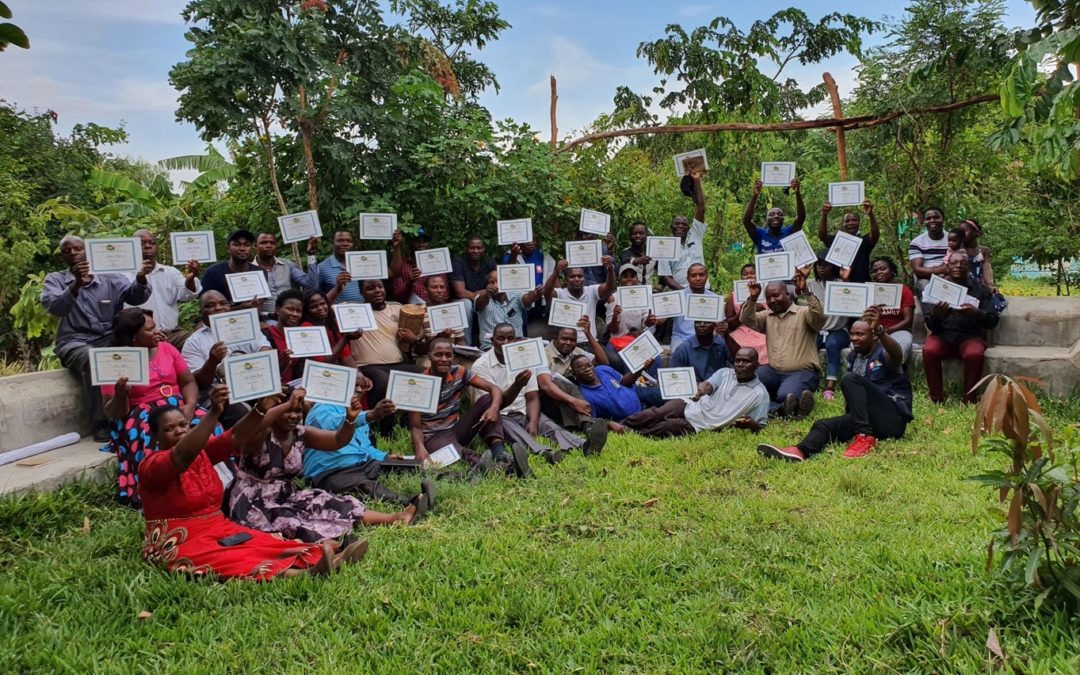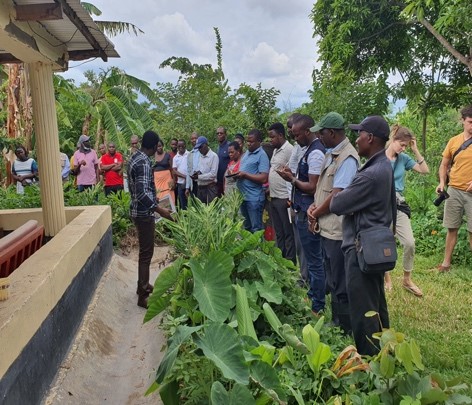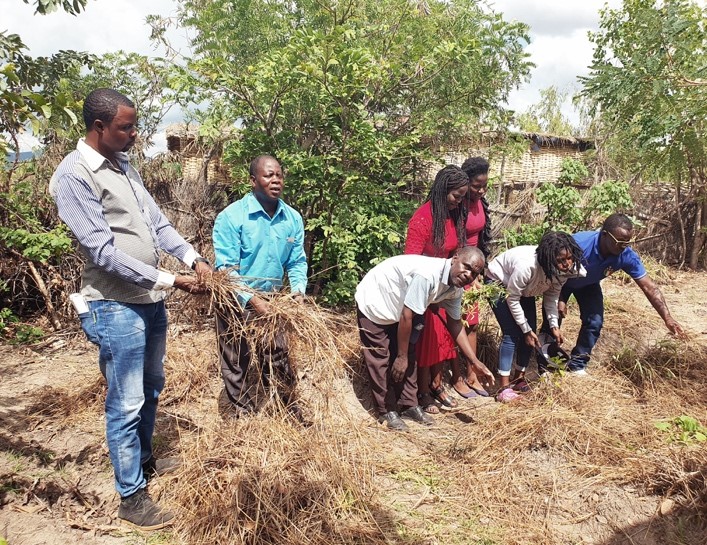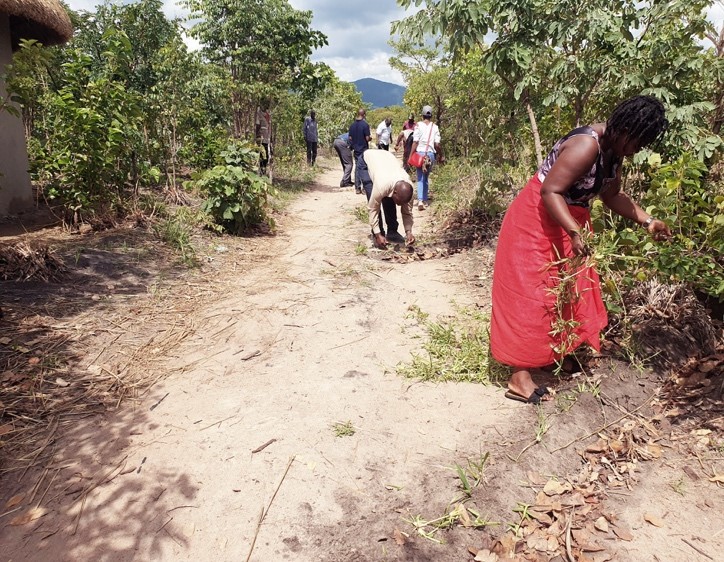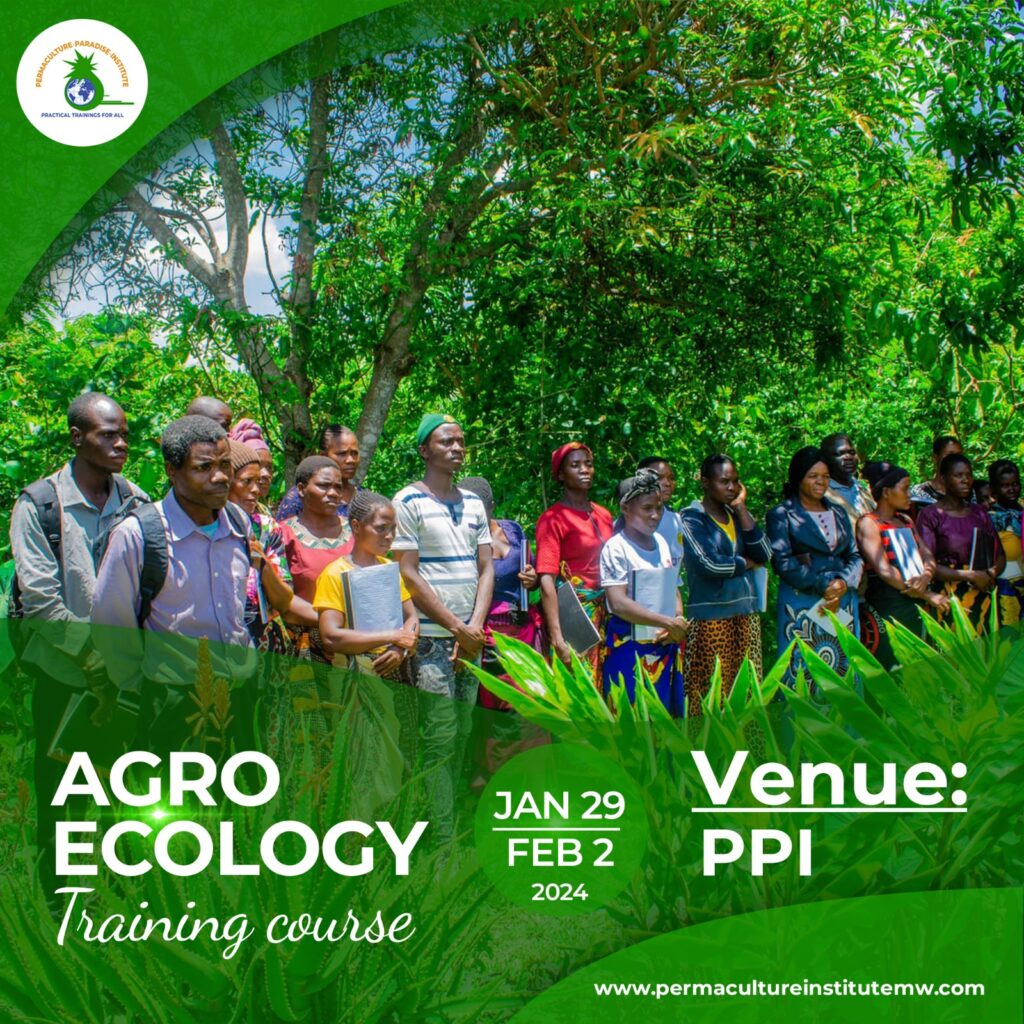The training was conducted from the 20th through the 24th of December 2021 at Permaculture Paradise Institute in Mchinji District, a total of 44 participants from Zomba, Machinga and Chikwawa under CADECOM, CICODE and Government participated. The training was intensive practical based with 70 % practical’s and 30 % theory.
The training covered topics which will help provide farmers with solutions to address global environmental and social issues affecting communities where the implementing partner’s and government officers work, but also applicable throughout the world and across a variety of climate zones, however practical design implementation was emphasized and specific to the sub-tropical climate of Malawi. The goal of the course was to achieve a basic working understanding of ecological-based planning, site design, and management.
The training covered the following topics
- Agro-ecology and the planetary food, energy, economic and social crises a look at global and local challenges
- Agro-ecology meaning and Definition
- Key Principles of Agro-ecology
- Agro-ecology Practical application
- Ecological Processes and Principles
- Resources in agro-ecology
- Resource scavenger hunt
- Agro-ecology Site analysis
- Designs for sustainable agro-ecology
- Efficient energy agro-ecological zones 1,2 ,3,4, 5
- Guilds in agro-ecology
- Agro-ecological Designs for sustainable water management
- Soil ecology and management
- Animal integration in agro ecology
- Integrated pest management in agro-ecology
- Propagation
Day One
The first day focused on the Introduction to Agro-ecology meaning and definition the different between agro-ecology and other practices, key principles in agro-ecology, ecological foundations processes and ecological principles. Practical application of agro-ecology Permaculture Paradise model farms from house hold level urban demonstration to the village level rural demonstration, quarter acre model for people with limited space, farm level in the dry land, farm level in the wetland, small and large scale as well as Observation of Resources, Global and Local Issue looking at global issues (challenges) such as: Peak Oil, Population pressures, economics, and pollution and how the global perspective is linked to local challenges: malnutrition, poverty, resource utilization, agriculture, and education.
Day 2
Day two emphasized on observation mapping and design as well as efficient energy zone planning.
Site analysis focusing on the Importance of Site Analysis in preparing for Designing (knowing what you have)Observation of Elements:Sensory: hear, feel, see, touch, taste
Specific: Sensory: what we hear, smell, taste, feel, see Climate: temps, rainfall patterns, seasons Microclimates: fluctuations within a climate, small variations (water features, termite mounds, geological features) Elements: available resources, existing structures, utilities, adjacent influences, history of site, restrictions, boundaries, slope Soil: type, structure, organic resources, markets, constraints Water: water sources, drainage, flow, erosion, catchment, harvesting, standing water, hygiene Plants: existing vegetation, trees, gardens, landscaping, foods, medicines, building supplies, fuel, ornamentals, protectors Animals: existing animals, structures, pathways, habitat, management issues Sector Influences: sun, shade, wind, fire, animals, people, smells Human/Personal “stakeholder”: work areas, recreation, access, driveways, pathways, long term plans, needs, wants, community Sectors: Directions (aspect), sun, wind, rain, storms, fire
The participants were spilt into groups to practice site situational analysis to understand the land before design application.
After the site analysis participants were tasked to draw individual maps of their sites as a visual representation and depiction of existing features as a starting point in designing for an agro ecological system. What is a Map?—what’s there. What is a Design?—what you want to be there. Elements and characteristics of a good map (orientation, scale, depiction of elements, view, existing structures, etc.)
The meaning and definition of a Map as well as the different between a map and design was explained to give the training participant a starting point in designing for sustainable and functional ecosystems.
Efficient energy zone planning: In the afternoon zones were introduced as a way of helping the designer think and design for the best use of the land and the energy going into the land.
Zone One (high energy, high utilization, irrigation, and daily functions) Zone Two (high energy, less irrigation, more perennials, daily/weekly functions, small animal management) Zone Three (rain fed annual and perennial, grains and staples) Zone Four (woodlot management, animal grazing, low maintenance) Zone Three Transition
Global shift from industrial/mono- cropping to diverse sustainability Diversifying agricultureZone 5 “Forest Systems” Description of Zone 5 and its importance“What is a forest?” looking at relationships and natural functions
Day 3
Day three focused on designs for sustainable water and soil management looking at the Water cycle & water tableas well as Human impact on both in Malawi and globally. Water management main principles Water Walk Observation, Observation of water processes Drainage and destination Estimating water catchment and harvesting needs (1mm x 1m2 = 1 liter) The participants were spilt into four groups to practice on how to manage and use water at a household, on drive ways and ways as well as at a farm level. Since agro ecology is site specific each group was supposing to conduct a situational analysis of their land and propose management techniques specific to their land which they were given to work on. This served as a lesson that every agro-ecological approach when managing systems so that they must be specific to addressing specific issues, hence not all techniques are applicable everywhere.
On soil ecology and management principles participants were introduced to how soil work, how soil quantity and quality is produced ecologically, nature cycle, human impact and solution oriented discussions.
The participants were then spilt into four groups and were given different gardens to conduct real time situational analysis and propose the best technique to manage the soils within the specified micro spaces given. Each groups applied the techniques practically based on their observation.

Later participants were tasked to draw proposed designs to the maps which they drew of their farms.
Day five
Day five focused on ecological pest management simple and easy ways to propagate plants animal integration and presentations of their designs
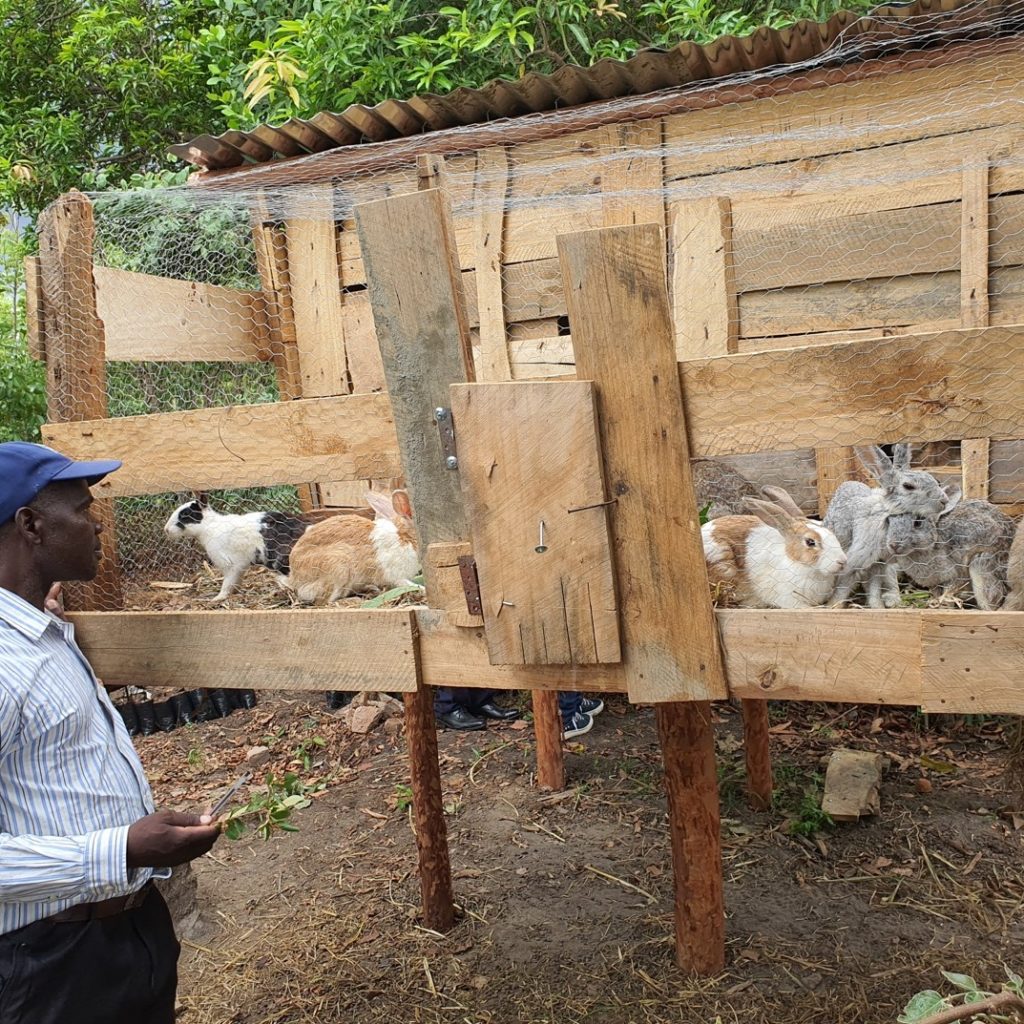
The training went well with no major challenges
It was recommended that all the trainings should be conducted at Permaculture Paradise Institute since it gives more practical experience to the participants as the participants are able to translate things on their own and relate to their situations.

